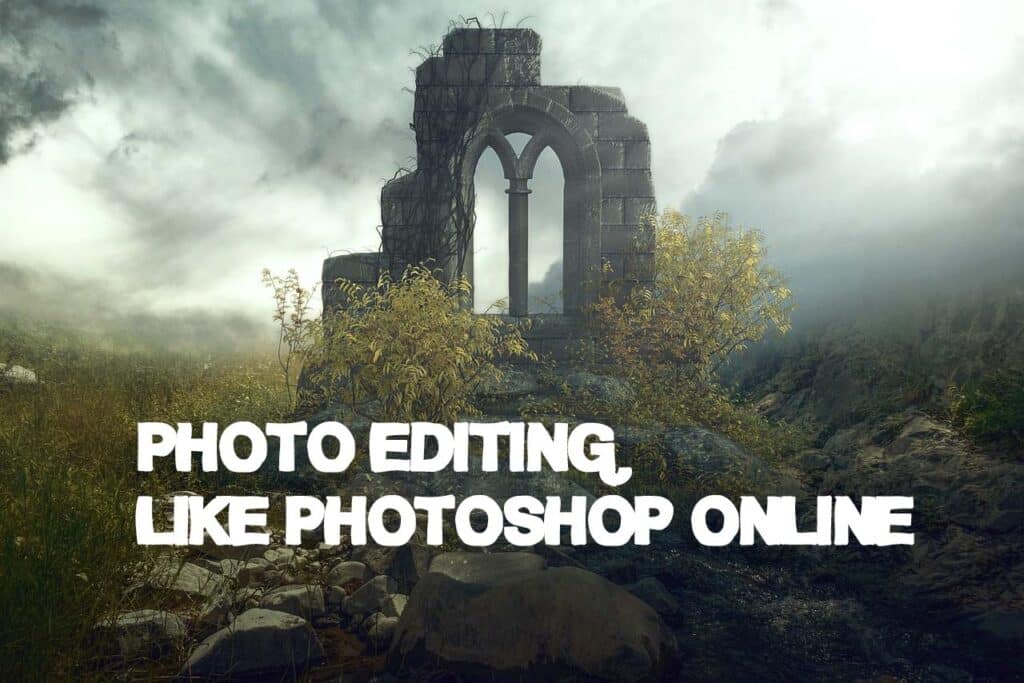There are several online photo editing tools and websites that offer features similar to Adobe Photoshop for basic to advanced image editing. While they may not have the full range of capabilities of Photoshop, they can be quite powerful for many tasks. Here are a few online photo editing options:
- Adobe Photoshop Express: Adobe offers a simplified, online version of Photoshop called Photoshop Express. It’s user-friendly and offers a range of basic editing tools. You can access it through a web browser or mobile app.
- Pixlr: Pixlr is a robust online photo editor with both basic and advanced features. It offers tools for image retouching, filters, layers, and more. It’s available in both web and mobile app versions.
- Canva: Canva is primarily a graphic design tool but includes a photo editing feature. It’s excellent for creating social media graphics and simple image enhancements.
- Fotor: Fotor is an online photo editing tool with a wide range of features, including retouching, filters, and effects. It also offers design and collage-making features.
- BeFunky: BeFunky is a user-friendly online photo editor with various tools for editing, retouching, and adding effects to photos. It also has a collage maker.
- PicMonkey: PicMonkey offers photo editing and graphic design capabilities. It’s known for its ease of use and creative features.
- GIMP Online: GIMP (GNU Image Manipulation Program) is a powerful open-source image editor similar to Photoshop. While it’s primarily desktop software, you can find web-based versions and alternatives that offer similar functionality.
- Photopea: Photopea is an online image editor that closely resembles Photoshop’s interface and functionality. It’s a popular choice for those looking for a Photoshop alternative.
These online photo editors allow you to perform tasks like cropping, resizing, adjusting brightness/contrast, applying filters, removing backgrounds, and more. The specific features and user interfaces may vary, so you can explore them to find the one that best suits your needs and preferences.
- What is Midjourney
 Discover the capabilities of Midjourney AI, learn how to effectively utilize the platform, and explore the advantages and disadvantages of the Midjourney AI image generator across its different pricing options.
Discover the capabilities of Midjourney AI, learn how to effectively utilize the platform, and explore the advantages and disadvantages of the Midjourney AI image generator across its different pricing options. - Brand identity elements
 In the vast marketing universe, imagery is pivotal in establishing and nurturing a brand’s identity. A brand’s visual choices are not merely aesthetic decisions but strategic moves that can significantly influence perception and performance. This Picfixs article explores the intricacies of selecting imagery that complements and enhances a brand’s essence, ensuring it resonates with the… Read more: Brand identity elements
In the vast marketing universe, imagery is pivotal in establishing and nurturing a brand’s identity. A brand’s visual choices are not merely aesthetic decisions but strategic moves that can significantly influence perception and performance. This Picfixs article explores the intricacies of selecting imagery that complements and enhances a brand’s essence, ensuring it resonates with the… Read more: Brand identity elements - 100 Best Mountain Captions and Mountain Quotes for Instagram
 Ready to scale new social media heights? Look no further than this treasure trove of 100 exhilarating captions and quotes, handpicked for your Instagram mountain posts!
Ready to scale new social media heights? Look no further than this treasure trove of 100 exhilarating captions and quotes, handpicked for your Instagram mountain posts! - Symmetry in Photography: A Creative Approach with Examples
 Delve into the enchanting realm of symmetry in photography as we showcase mesmerizing examples on our website. Experience the allure of perfectly mirrored images!
Delve into the enchanting realm of symmetry in photography as we showcase mesmerizing examples on our website. Experience the allure of perfectly mirrored images! - 11 Quarantine Photoshoot Ideas to Try at Home for Amazing Photos
 Looking for unique photoshoot ideas during quarantine? Explore the 11 creative suggestions that will help you capture unforgettable moments at home.
Looking for unique photoshoot ideas during quarantine? Explore the 11 creative suggestions that will help you capture unforgettable moments at home.


